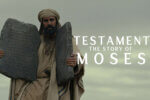Who said Christians have to meet in a traditional building with a pulpit? Innovative Christians today are redefining church.
As a relatively new Christian, Lisa Weger doesn’t fit the traditional definition of a church planter. Yet each Sunday night the Austin, Texas, resident hosts up to a dozen people for dinner, Bible study, prayer and conversation about God.
Not everyone at her house church follows Christ, including her husband, a disillusioned former church member. Two participants are from the New Age circle that once ensnared Weger, who accepted Christ in 1978 but quickly faded away from a church she found cold and formal.
Today the 49-year-old businesswoman bubbles with enthusiasm for the Christ she vowed to follow two years ago and the Holy Spirit who baptized her with His power. Weger renewed her faith after an online discussion with Jay Ferris, a rural North Carolina charismatic layman she calls her spiritual father.
“I didn’t want to participate in what I saw going on in the name of Christ,” Weger says of her shunning of traditional congregations for more than 25 years. “Out of that, the most amazing thing that has happened to me is these relationships from God. The growth that has happened by having a spiritual father is like having the love of Christ on the horizontal [plane].”
Ironically, today Weger says the hardest people to discuss Jesus’ love with are traditional church members. She thinks most see church as an activity they “do” rather than a state of being.
Years ago when Weger was hurting and collapsed in tears at her old church, she says several leaders walked by without speaking. Today, she revels in the close interaction and study of the Word that she believes is drawing her husband to consider the claims of Christ.
“People are coming and sharing life together,” Weger says. “Everyone has an opportunity to talk. We’re learning to rely on Christ and look to Him for the answer. I never encountered this in traditional church. It felt like you go and sit and watch.”
Exploding Movement
Judging by the house-church movement that is exploding across North America, Weger’s story can be repeated millions of times. Christian demographer George Barna estimates 8 percent to 9 percent of adults in the United States—22 million to 24 million people—are now involved in some form of house church.
“Twenty years ago anybody who was outside a traditional congregation was highly suspect,” says Southern California author Wayne Jacobsen, who left his charismatic pulpit in 1994 to speak and teach about small groups. “I think there’s much more freedom for people today, whether they do it in a house-church way or a relational way.”
Others speaking out in favor of this trend include best-selling author John Eldredge; Hollywood’s Richard Rossi, producer of a new movie on Foursquare founder Aimee Semple McPherson; and John Arnott, former senior pastor of Toronto Airport Christian Fellowship.
“If we are going to reach this world for Jesus, we need a completely new model of ‘doing church,'” Arnott wrote in the most recent issue of House2House magazine. “I don’t know why we can’t have ‘church’ in homes, offices, schools, coffee shops, or even outside for that matter.”
The implications are far-reaching. In his latest book, Revolution, Barna projects that traditional church attendance will drop by 50 percent within the next two decades. Rather than lamenting that trend, author James Rutz predicts this awakening could spark the most significant development in Christianity since Martin Luther challenged the Roman Catholic hierarchy nearly 500 years ago.
“I call it the Transformation,” Rutz comments in his recent book, Megashift. “Or the Empowerment. The revolution now upon us is a complete paradigm shift, taking us back to the time of Christ. It is going to be a lot bigger than the Reformation.”
Those involved in the movement say it is bringing new life to the body of Christ as it matures. Proponents include Neil Cole, a church planter for the Grace Brethren denomination in Southern California whose efforts have sparked the creation of more than 700 house groups worldwide.
After leaving his traditional pulpit seven years ago to launch a church in a coffeehouse, Cole says the network that sprang up from that effort soon led to Christians meeting every day of the week in Long Beach. “I think the most significant breakthrough is the concept that Christians can hear and obey God without an established leader telling them what to do,” Cole says. “We have removed a lot of filters between God’s people and God’s voice.”
Even the Assemblies of God (AG), which had been slow warming to the concept, has a missionary in Utah who recently started three house churches in a predominantly Mormon area.
Although church-planting director Steve Pike says the AG has been largely unaware of house churches, the denomination has invited missiologist David Garrison to address a leadership summit in San Diego next December.
“We certainly want to embrace anything God is doing, and it seems God is doing something through house churches,” Pike says.
Pinning down numbers in a fluid, decentralized movement is a challenge. Yet it is clear the expression of new forms of congregational life, which supporters trace to the book of Acts, are on the upswing. Tony Dale, a doctor who runs a health-care company in Texas and edits House2House magazine, says 15 years ago many house churches were composed of people who were angry after being wounded in traditional circles.
However, in the last decade Dale says increasing numbers of people drawn to these intimate communities have warmed to the idea of worshiping God in the same style found in the first century. Dale sees strength in today’s scene, saying it is largely proactive rather than a reaction to traditional church.
A veteran of England’s house-church movement, Dale says conditions on this side of the Atlantic remind him of Britain in the 1970s. Dale calls the huge scale on which things are happening a sign of the advance, with more than 500 people expected at the annual house-church conference in Denver during Labor Day weekend.
The development that surprised him was a conference in Florida in 2004 where such noted leaders as John Maxwell and James Davis of the Global Pastors Network spent two days discussing house churches. “I was astonished they were aware the house church was emerging, let alone discussing it,” Dale says.
Distinctive Environment
Dale’s wife, Felicity, who has written several books on house-church topics, says she and Dale often get letters saying, “God told us to start a church in our house, and we thought we were the only ones until we got your magazine.”
The Dales are involved in a network of churches that started in south Austin a decade ago. Today’s online environment is propelling the movement forward at breakneck speed.
Felicity says the typical format in their network is an Acts 2 style of fellowship—breaking of bread, prayer, and praise and worship. House churches also place supremacy on Scripture: “If somebody does the teaching they become the authority,” she says. “If the Word does the teaching it becomes the authority.”
Many house churches offer women an opportunity for full participation in congregational life. Although churces following a traditional format may frown on female leadership, Felicity says in their network women prophesy and lead churches without raising eyebrows.
“There are absolutely no restrictions put on me, whether felt or spoken,” she says. “I come from a background in England where restrictions were definitely placed on women by church culture. There is a free atmosphere [in her network] for me to do whatever God tells me to do.”
More openness to women is only one of many house-church distinctions. Here are others:
The work is developing slowly; there are only six churches in his immediate network, with several dozen in southern Ontario. Zdero estimates there are between 400 and 500 house churches across Canada. “We try to [follow] 1 Corinthians 14:26, which says everyone brings a word [or] prophecy,” says Zdero, who wrote a book on the global house-church movement two years ago. “Our house-church meetings are like spiritual potlucks, where everyone brings something.”
Because of such enthusiasm, Kreider expects that by 2020 Christians will divide their attendance equally between megachurches, cell groups and house churches, with God using each stream to build His kingdom. “We have a very strong covenant with every movement,” says Kreider, who hopes these different expressions don’t spark division. “Every denomination has something to give to the rest of the body of Christ.”
Inherent Weaknesses
Despite their embrace of alternatives, many in the movement are quick to agree that house churches have weaknesses. In the past, Kreider says, house churches have been reactionary, dysfunctional and isolated. Today, he points to such potential pitfalls as promoting an independent spirit or heresy.
Even such advocates as Jacobsen eschew the house-church label. The leader of Lifestream Ministries is the co-author of Authentic Relationships, which points to home groups as fostering mutually supportive environments.
Despite this background, Jacobsen says house church isn’t the answer for people who are struggling with anxiety, focused on getting their needs met or chasing after the latest “movement.” Having seen the ebb and flow of the charismatic, discipleship, deliverance, healing and spiritual-warfare movements, Jacobsen says mankind tends to take God’s work and turn it into a human-led program.
Likewise, one glaring weakness of house churches is that many are governed by authoritarian leaders. Often these are leaders who couldn’t “cut it” in a traditional church, so they form a group to follow them in a smaller setting, Jacobsen says.
He sees others who are hung up on a particular methodology, handbook or set of procedures instead of allowing Christ to be in control. “A house church can be a more formalized congregational structure,” Jacobsen says. “It’s just smaller and in a home.
“I would say a lot of house churches are incredibly unhealthy. They’re led by people who have their ego all twisted up. If it’s manipulative, the smaller the environment the more dangerous it is.
“Some tend to be very narrow theologically. It’s conformity based: ‘You either believe what we believe or you’re not welcome here.’ They’re sometimes much narrower than congregational groups.”
Although eager to explore the house-church dimension more fully, the AG’s Pike says supporters need to avoid tarring traditional congregations with blanket statements. The idea that all people in a traditional church simply view it as an activity can probably be said of those in house churches too, the church-planting expert says. And, Pike says, many traditionalists see their church as a warm, loving community.
“The Assemblies of God is ‘both-and’ rather than an ‘either-or,'” Pike comments. “We’re saying there are lots of ways to do church, and that includes house church; it includes megachurch. I don’t think house church is going to be the only form of church down the road.”
Still, Cole thinks the house church could revitalize its traditional brethren. If house churches spark widespread renewal, the average pew sitter will catch fire, tell others about Christ, reach out to friends and neighbors and start tithing, Cole says.
“It causes relatively common Christians to do uncommon things for God,” Cole says. “That’s what we want to see.”
Ken Walker, a freelance writer based in Huntington, West Virginia, was a contributor to Refuel 2: The Complete New Testament (Nelson Bibles).
George Has Left the Building
Christian researcher George Barna gave up on the traditional church last year to pioneer a new model that meets in his home.
Although George Barna’s book, Revolution, has sparked controversy and a national debate over the future shape of Christianity, among house-church leaders it has stimulated considerable excitement.
In his book, Barna estimates there are more than 20 million “revolutionaries,” which he defines as people who are seeking more authentic relationship with Christ than is offered in traditional churches.
On a wider scale, Barna estimates 50 million adults practice their faith through a variety of alternatives, among them marketplace meetings and Internet forums. House2House magazine editor Tony Dale calls the book one of the movement’s most significant recent developments.
“Two or three years ago we had no idea there were millions out there who might be thinking this way,” Dale says. “What Barna has done is … say: ‘This isn’t some little thing that is happening. There’s a move of God that people need to open their eyes to.'”
The Southern California demographer told Charisma that Revolution has brought more positive—and negative—feedback than any of his 37 previous books.
The Barna Group’s founder went into the project knowing it would upset a lot of people but argues that he just relates what the research has revealed. Though some may be offended, they have to deal with the findings, Barna says.
“A lot of people have reached the point where they have tried a lot of other things in life to find meaning and purpose,” Barna says of the impetus behind the alternative church movement. “They found [traditional church] wasn’t fulfilling what they knew their life could be as a servant of God.”
On a personal note, Barna’s research persuaded him to leave a traditional congregation last October to start one that meets two to four times a month in his home. In addition to worship, Bible study and prayer, the 23-member group pursues service projects in the community, such as helping elderly widows or mentoring children of dysfunctional homes.
Barna says the experience has deepened his walk with Christ, forcing him to be better prepared to discuss Scripture while providing more worship options. It also opened the group’s eyes to needs around them. “It’s been kind of interesting researching who’s out there who has needs who wouldn’t be on the radar screen of organizations,” Barna comments. “And to find … wow, there are quite a few people who are really hurting.”
Although Barna may be enjoying his house-church experience, Revolution has generated considerable criticism from observers who question his seeming delight over the decline of local churches. An author who has written a dozen books on cell groups and devotional life takes Barna to task for espousing the kind of individualism that he says people in cell and house churches are trying to stand against.
Joel Komiskey says scriptural Christianity has five expressions, starting with local bodies and expanding into the universal church. “Barna quickly dismisses the local church by saying that the Bible simply referred to believers meeting anywhere at any time,” Komiskey says. “But what about all those passages that refer to God-ordained leadership in the local church?
“Reference after reference point to how Paul and others would appoint elders to shepherd the local groups of believers. This is totally in contrast to Barna’s encouragement for revolutionaries to serve apart from local church leadership.”






Leave a Comment
You must be logged in to post a comment.